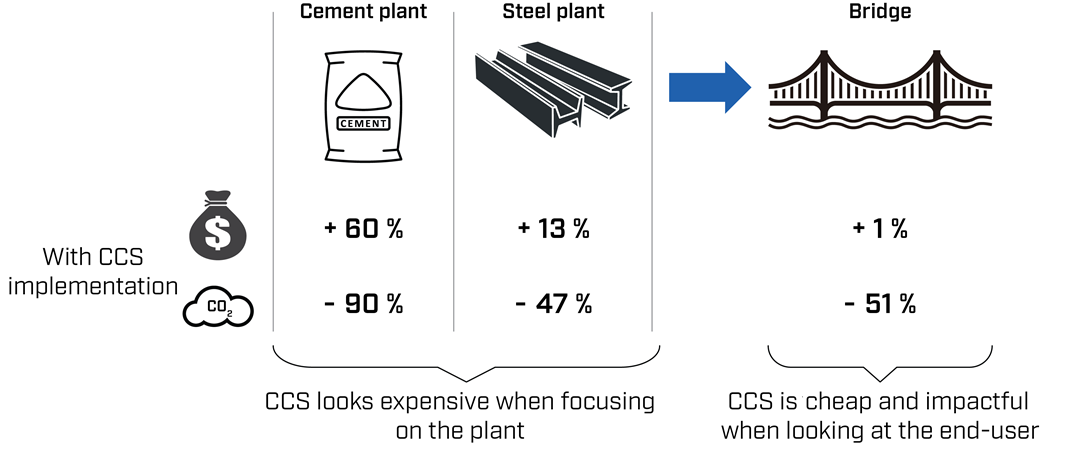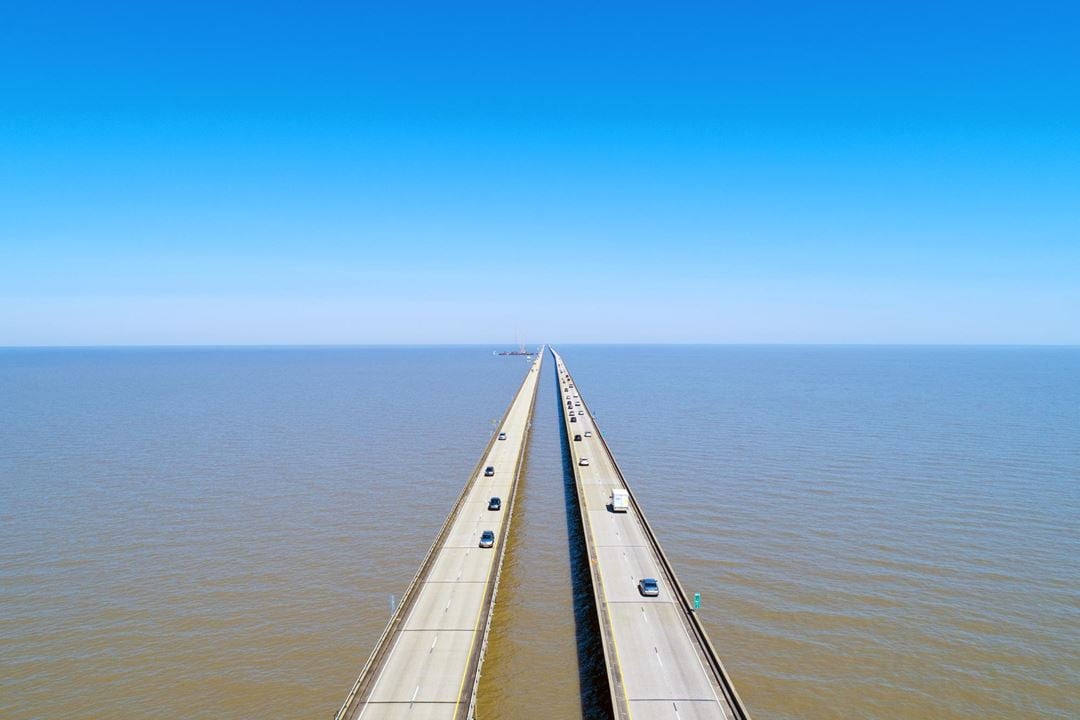These findings have been published as a paper “Is CCS really so expensive? An analysis of cascading costs and CO₂ emission reduction of industrial CCS implementation on the construction of a bridge”, in the latest edition of Environmental Science and Technology.
The paper, authored by Sai Gokul Subraveti (SINTEF), Elda Rodríguez Angel (TU Delft), Andrea Ramírez (TU Delft) and Simon Roussanaly (SINTEF), examines how carbon capture and storage (CCS) implementation in steel and cement production would have impacted the cost of the Lake Pontchartrain Causeway bridge in Louisiana, USA. The bridge is currently the longest beam bridge over continuous water in the world, and consists of approximately 225,000 m3 of concrete and 24,209 tonnes of steel. This work was performed in connection with the Norwegian CCS Research Centre (NCCS).
CCS would only impact part of the total cost
CCS has often been criticised for being too expensive. However, while many studies have already investigated the impact of CCS implementation on industrial plants, they do not examine the impact of CCS implementation on the end user. This is a significant gap, as most people do not buy raw materials such as cement or steel, but products that the cement and steel were used to create, such as houses or bridges.
In terms of the case study, CCS initially resulted in a significant cost increase of raw materials: 60% for cement and 13% for hot-rolled coil (HRC) steel. However, as cement and HRC are only a part of the bridge construction cost, the overall cost increase due to CCS would be approximately 1%.
“Cement and steel represent, in fact, only a small fraction of the total cost of building a bridge,” explained Simon Roussanaly. “And therefore, their impact is not as significant as it is perceived to be when you look solely at a cement and steel plant.”

1% increase in cost is more than reasonable for a 51% reduction in CO2 emissions
For the 1% increase in cost, CCS implementation could have reduced CO2 emissions associated with the bridge’s construction by 51%[1]. This 1% increase could be covered by a slight increase in the tolls already paid by the road user to access the bridge. Not only is this more than reasonable, the significance of a 51% emissions reduction cannot be ignored – particularly as the cement and steel industries together account for approximately 15% of the world’s CO2 emissions.
“This case study clearly shows that a holistic approach must be applied with assessing the cost of CCS verses emissions reduction – not only at the component and material level, but as a whole,” said SINTEF’s Executive Vice President for Sustainability Nils Røkke. “This should encourage infrastructure developers and public purchasers to request low-emission materials in tenders and use this as a baseline for the environmental performance of new builds.”
The results from this case study illustrates how cities and governments could use public procurement of low-carbon materials to achieve their 2030 climate goals under the Paris Agreement at a reasonable cost. While more research is needed into the impact of CCS implementation on end-user products and services, we hope that this is the first step to a better understanding of the cost and benefits of CCS.
1- Although not considered in this study, it is worth noting that further emission reduction could be achieved by, for example, using low-carbon hydrogen instead of coking coal as reducing agent.


